The Evolution of DJI Drones
If you're looking to sell your drone we offer the most convenient service and best cash value for good and broken crafts. We also offer interesting facts about the most popular drones made by DJI. Read on to find out our compiled knowledge based on personal experiments and popular publications.
DJI Phantom 3
After covering the compact Mavic Pro drone we have yet another one to review. And that should be surprise. Christmas is in less than one week and a drone could easily be the best Christmas gift for any guy.
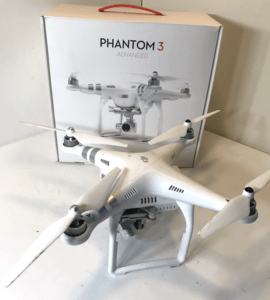
In this blog, I am going to discuss whether or not the standard edition DJI Phantom 3 (P3) is still worth picking up as we head into 2018. It's an older model now, but does that make it irrelevant? Let's get straight into it and see if we can answer that question for you.
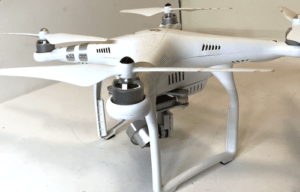
Getting right into it, there are two reasons why people buy drones; either to use them as cameras or just fly around and have fun with. While you can fly the P3 around and have fun with it, its main purpose is to be used as a camera. Due to that it features a camera that can zoom in up to 2.7K. It also has a three-axis gimbal which helps make all footage look nice and stable. Despite being the standard edition of DJI's Phantom 3 drone lineup, this thing is still incredibly capable.
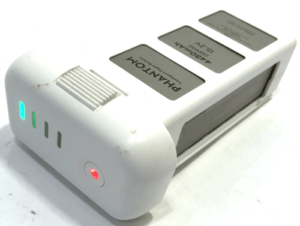
23 minutes of flight time
The 4,480 milliamp power battery that the P3 comes with is expected to around 23 minutes of flight time. We've been experiencing about 21 minutes, but really it depends on what you are actually doing with the drone. If you are flying along at top speed you are likely to drain the battery quicker. That's because you're putting more strain on the motor.
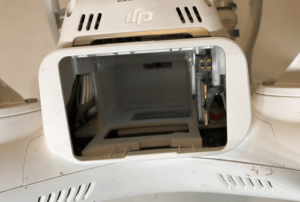
Controller
The controller the standard P3 comes with is good enough. It does, however, lack a few buttons that the Pro level controllers have. But they can be controlled from the DJI Go app on your smartphone. What the controller has is two sticks. One that controls lift as well as rotation, and another that just controls the direction. Directly below them is the on/off switch. When toggled to the on position shows you how much controller power you have left.
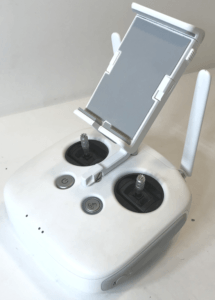
On the top left of the controller there is a 3-way switch called S2. And on the top right side of the controller is another switch called S1. Without going into too much detail here, these switches effectively just change the flight modes. On the top left side of the controller, there is a wheel that controls the up-and-down movement of the camera. The last thing about the controller is the clip that holds your phone. The P3 isn't designed to hold a larger device such as a tablet, it only holds phones.
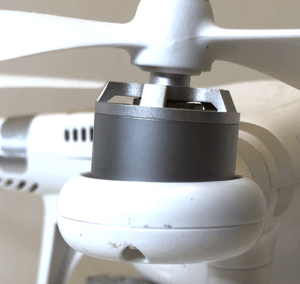
Speaking of your phone, DJI provides an app called "DJI Go" that you can connect to with your smartphone to see what your journey is doing. It also gives you access to multiple settings that the drone has.
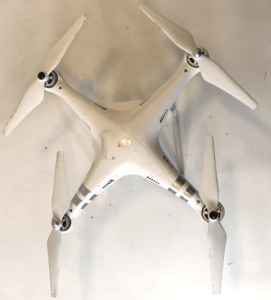
Weight and Speed
The drone itself with the battery and props on weighs 1,216 grams. The standard P3 also has a maximum ascent speed of 3 meters per second. Max descent speed is also 3 meters per second. This model also has a max speed of 36 MPH.
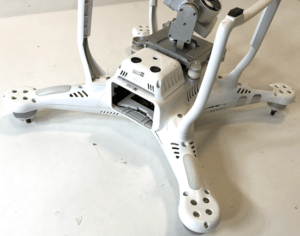
Buying DJI P3 in 2018
Now that I have talked about what the drone can do it's time to answer the question: Is this drone worth buying going into 2018? Well, given the cost of the device and what it is actually capable of doing, I'd say that the DJI Phantom 3 is actually well worth it. When the Phantom 3 came out in January 2013, it was actually quite expensive. But now almost 5 years later it can be found for about $500 USD. That still sounds like a lot of money but compared to DJI's other drones like the Phantom 4 series and the Mavic, it's actually quite well priced.
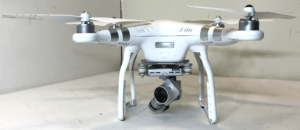
Even though the standard Phantom 3s are an older device by today's standards, they are still really a very capable device. They might lack some of the features of the newer DJI drones have. But they are probably the best and easiest way to get into drone flying. So, if you're looking for a decent drone that can get good aerial shots and take some pretty decent video footage, I'd say that the P3 is definitely worth picking up.
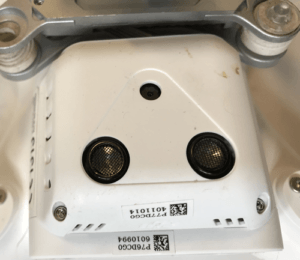
DJI really hit the spot with the Phantom 3 and opened a new chapter in personal drone history..
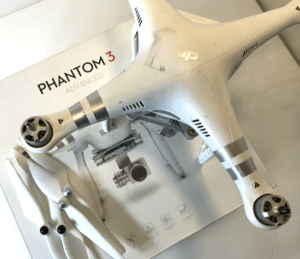
Sell DJI Phantom 3 (Professional & Advanced) drone
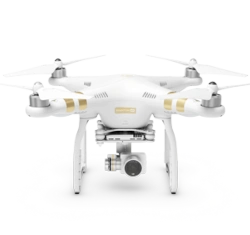
DJI Phantom 4
Drones are excellent devices that allow us to take stunning aerial photographs and videos. Today, I will be giving you a full tour of the Phantom 4 by DJI. It was one of the best selling drones in 2016. I will be using the acronym "P4" in reference to the Phantom 4. The goal of this write up is really to give you all that you need to know about the Phantom 4, which will include all the great new features and updates to the DJI Go app as well as the key differences between this model and its predecessor, the DJI Phantom 3 (P3).
From just a visual standpoint the P4 retains the same basic design characteristics as the P3. So you can see the shape and the color and everything is the same. The P4 has a new glass finish and everything in the overall design is very sleek and clean.
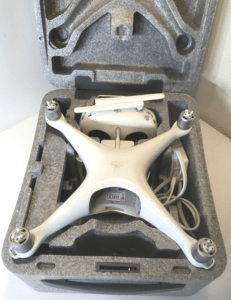
Features
What is it about the P4 that has already established it as the best drone in its class? Well, the first thing that you'll probably hear is that it's the first consumer drone to feature obstacle avoidance and subject tracking. It is made possible by the front-facing vision cameras on the front of the copter. This was not available in the previous P3. However, in previous models, we've already seen downward-facing vision cameras used to keep the drone locked in its position in the air even when indoors and without help from GPS.
While the P4 still makes use of that positioning system, DJI has brought the technology to the next level using forward-facing stereo vision cameras. So, we have ultrasonic sensors and stereo cameras on the bottom as well as new stereo vision cameras on the front.
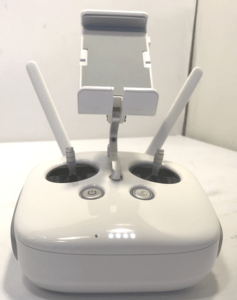
Active Track
Using its new stereo vision system, the Phantom 4 can detect and avoid obstacles as well as track and follow operator selected subjects using a new feature in the DJI Go app called: Active Track. Active track mode allows you to select an object on your screen in the DJI Go app and the P4 will instantly create a depth map of the scene and the object in order to track and keep the selected object in the frame. The P4 even knows when you've selected a person. That is important because you can track people even if they turn or change positions.
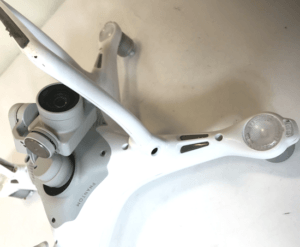
Tap-Fly mode
The next highlighted feature is the Tap-Fly mode. In Tap-Fly mode you simply tap on the live FPV screen and the P4 will fly a course in that direction. Even if you select a point that is lower than its current altitude, the P4 will continue descending until it reaches a minimum altitude setting. That by default is around 10 feet. It will still continue to move along the heading that you originally selected while maintaining that minimum altitude. It prevents it from hitting the ground.
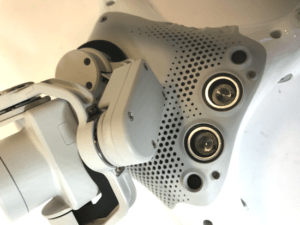
Obstacle Avoidance
That brings us to our next highlight feature, which is Obstacle Avoidance. The Active Track and Tap-Fly functions alone are great features, however, it makes a world of a difference when you pair these features with the ability to avoid obstacles that may be in the way of your flight path.
So, if that is not already enough, there is Sport Mode which is activated by a new switch position on the back of the controller. You'll switch from P to S which stands for Sport. And this is going to enhance the performance of the P4 increasing the max pitch to 45-degrees. It will also increase the max speed from 36 to 45 MPH. This will also increase max ascent and descent speed. However, I will note that this is going to disable the vision system. Meaning that you will not have obstacle avoidance support in this mode.
It's also good to mention that apart from these flight modes and obstacle avoidance, you still have access to all of the same smart modes that were available with the P3. For example Point of Interest, Follow Me, Waypoints, Home Lock, Course Lock, etc.
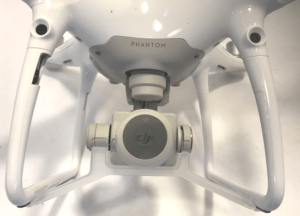
Camera
The camera on the P4 also shares the same sensor as the P3 Professional. So you're still receiving beautiful 4K imagery and 12-megapixels. But only the P4 camera can do 120 frames per second in 1080 HD resolution. It is really great for you guys doing slow-motion imagery. I will also note, that even though the sensor is the same, they have updated the lens on the camera to support enhanced color and better glass.
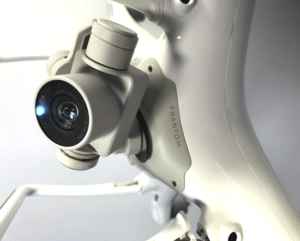
Gimbal
So, now I am going to go through and just look at the differences and updates to the P4 in terms of the hardware itself, starting with the gimbal. The first thing that you'll probably notice here is a newly designed gimbal. Now it has two motors on each side of the camera to control the pitch angle. This is important because it provides stronger support on that tilt access axis and allows for greater efficiency for the motors.
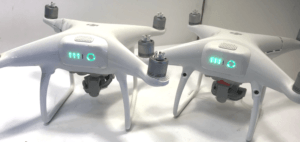
When we compare the mounting system with that of the P3, again you'll see that it is much cleaner. The vibration dampening system as well as well as the SD card and USB access slots have been moved up into the body of the aircraft. All of these components are brought together with a really well-designed bottom plate. Not only does the bottom plate help with the sleek design of the P4. It allows for full ventilation of breathability of the electronics. It's actually made of a very light yet strong composite material. This is going to increase the structural integrity of the aircraft as a whole. Especially since all the new sensors and internal components cause the P4 to be just slightly heavier than previous models. The difference is only about 1/4 of a pound.
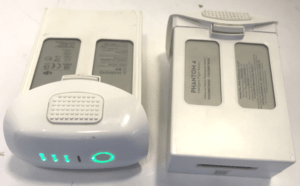
Battery
In order to support all the new components, DJI has developed a new battery made just for the P4. This is a larger capacity battery of 5350 milliamps. Due to its larger capacity and better efficiency in the motors, DJI has released the P4 with the rated 28 minute flight time. That's almost 10 extra minutes in the air.
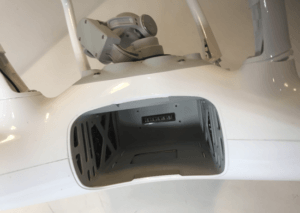
In line with the modern design and look of the P4, you can see that even the battery compartment looks like something straight out of a Star Wars movie. Everything has been shifted around to make space for the larger battery and the new smart components.
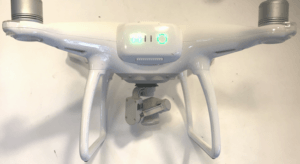
Arms
That brings us the arms. Just like the ventilation on the bottom plate, we also see an improved cooling system on the arms which are made up of cooling vents on the bottom of the arms. The motors have been raised up so that they are unobstructed by the arm design. This will allow for better airflow throughout. An additional benefit of having the motors raised even just slightly is that when the aircraft pitches forward you won't see the propellers in the camera. You used to see the propellers come into view of the camera and this would disrupt your shot. However, with the motor slightly raised you'll notice that this is going to happen way less often. Unless you're in Sport Mode where the max pitch of the aircraft could be up to 45-degrees.
Propeller mounting
The P4 also features a new propeller mounting system which is a quick-release system. You simply turn and remove the props and do the same to secure them back into their position. And you don't have to worry about the threads, or anything wearing out over time.
DJI also improved the redundancy compared to previous models with now dual compasses and dual IMUs, keeping everything nice and extra stable during flight.
There is much to be excited about if you pick up the Phantom 4. Even though it's not the newest drone on the market. Its upgrades from the previous Phantom 3 are incredible. It is sure to keep you entertained for some time to come.
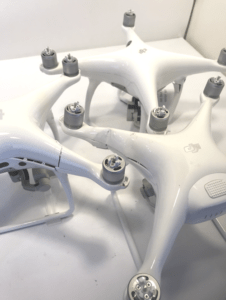
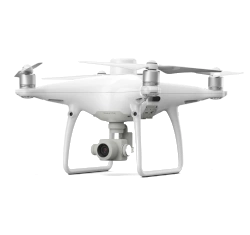
DJI Mavic Pro
Drones have been getting more and more popular over the past few years. You see them at sporting events, 4th of July events, carnivals, just about anywhere where these days. Have you considered getting one yourself? Are you afraid to invest a lot of money into a hobby that with one slight miscue crashes your drone and then it's down for the count and in need of pricey repairs? If this sounds like you then keep reading on and check out the DJI Mavic Pro.
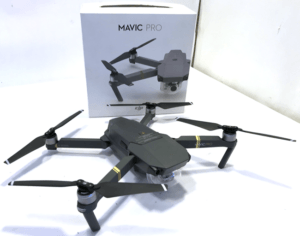
DJI Phantom 4
A lot of people purchased the DJI Phantom 4 last and it instantly became a favorite drone among many. It was very easy to set up, very fun to fly around, and it produced an amazing quality of footage. However, it has one big problem that kept us from using it. It was a huge hassle to lug that thing around.
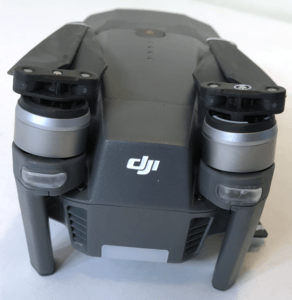
The Phantom 4 is relatively compact. But keeping it safe takes up a lot of space because of how delicate and fragile the propellers and gimbal are. Take a look at the case, it measures at a whopping 14" tall, 12.5" wide, and 8.5" thick. To put that into perspective, that's bigger than some desktop computers out there. You can't even comfortably put it into a backpack.
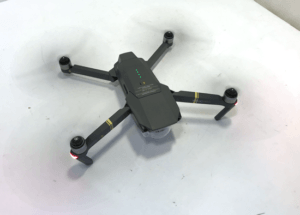
The Mavic Pro
The next thing was the controller was essentially the shape and size of the original Phantom 1 drone which came out over four years ago. This thing was also tough to transport without scratching the glossy shell. So, while we loved using the Phantom 4, we always had to think ahead. We had to plan out how to transport it, if there was someplace safe to store it when we weren't using it, and even if it was lugging it around. In the end, we left it at home more often than not.
Since then DJI has released the Mavic Pro. A drone with the same capabilities as a Phantom 4, but coming in as a fraction of the size. And if that wasn't enough, it folds down to an even smaller fraction! So, that begs to question: is the Mavic Pro our new favorite drone?
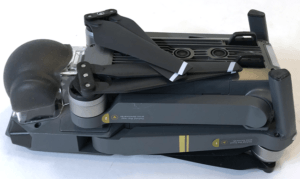
Let's start with an outside tour. As you can see DJI has ditched the glossy white look for a matte gray finish. It feels much more rugged and scratch resistant. It also looks a lot more aggressive and less like a toy and that's good and bad, depending on where you're trying to fly.
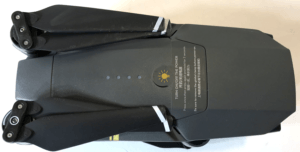
Propeller blades
The propeller blades have been redesigned and now fold in half as well. They still mount using quick disconnects. But combined with the new folding arms you can now store the drone with the blades still attached. It's a very handy feature. However, we still recommend removing the blades when they're folded they actually rub against the body of the drone. That doesn't really sound like a big deal but the blades need to be perfectly balanced. So you want to avoid scratching them and bending them as much as possible. We love the idea of transporting it assembled and ready to use like the Autel Robotics X-Star Drone.
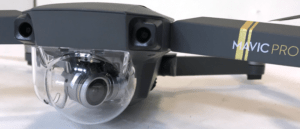
Camera
The camera remains the same as the original Phantom 4 with a 1 by 2 3" sensor. It boasts 4K resolution and 30 frames per second. This is not the same one as the camera found in the Phantom 4 Pro which features a larger one-inch sensor. The lens on it is slightly different as well. It has a narrower 78-degree field of view, instead of the original 94-degree field of view.
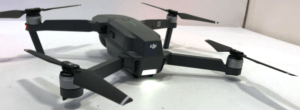
Features
All the sensors found on the Phantom 4 can be found on the Mavic as well. There are two forward-facing cameras and two downwards-facing cameras and two down phasing ultrasonic rangefinders. As a result, you get all of the same features such as obstacle avoidance, precision hovering, tap-to-fly, follow mode, course lock, point of interest, and waypoints. Although none of these features are new, we were impressed that nothing was neglected when downsizing from the Phantom 4.
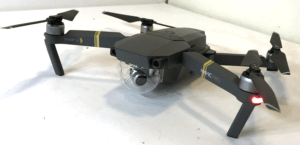
Performance
Now between the Mavic and the Phantom 4 both in sport mode their performance is just within 11% of each other; 27 minutes versus 28 minutes of flight time, a max forward speed of 40 miles per hour versus 45 MPH, a max ascending speed of 5 meters per second vs 6 meters, and a max descent speed of 3 meters vs 4. Some may think it's strange that the smaller drone is slower than the larger one. On paper, yes, but in functionality, it actually feels much more nimble because Mavic only weighs only 734 grams compared to the Phantom 4 at 1380 grams. It accelerates and changes direction much quicker. That's something the specs don't show. It also seems to hover in place better.

Controller
Let's move on the on to the controller. This new one is much smaller and it even features an OLED screen with all of the information that you need. It lets you fly the drone without a phone attached. But you won't have a live view of your camera and you lose camera-related features like tap-to-fly. The controls offer good feedback and the new tougher plastic and the rubberized grip feels great in the hands. There are, however, two small downsides to the new controller. DJI includes multiple microUSB, lightning and USB-C cables for connecting pretty much any smartphone, but threading it through the connector and plugging it into your phone can be a bit finicky at times.
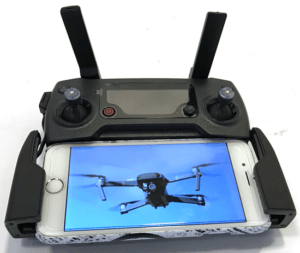
Finally, the controller is mainly designed for a smartphone less than 160 mm tall and thinner than 8.5 mm. This means no-name support for tablets and some problems fitting in phones with a thick case due to where the phone sits. it also makes it a bit awkward to attach a screen hood as well. So make sure to use a phone that you can easily see outside.
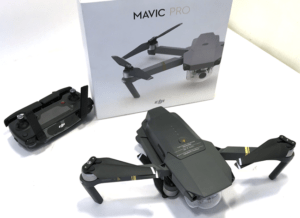
In conclusion, the DJI Mavic Pro is a smaller, nimbler drone with the great features found on the full-size Phantom 4. Video quality is just as good and there's no contest when it comes to portability and convenience. As an added bonus, additional batteries with Mavic for just $89 vs $169 for the Phantom 4. The Mavic itself comes in at $999 USD vs $1,349 for the Phantom 4 advanced. If you're looking for a drone that is fun to fly and shoots excellent video, we think the choice is pretty simple.
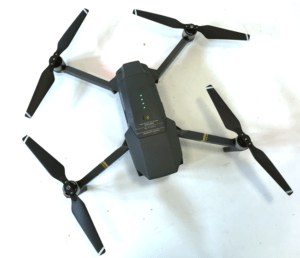
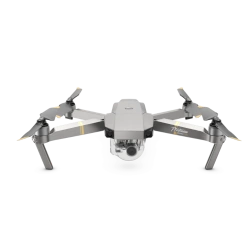
DJI Mavic 2 Pro

The DJI Mavic 2 Pro is an excellent blend of style and functionality. With an excellent camera on top of it all, it also is equipped with a massive 20MP one-inch Hassleblad sensor. However, this drone has a high value. The Mavic 2 Pro goes for a whopping $1500. Yet, even with the price, this drone is every enthusiast's dream brought to life.
However, I must admit, I may be a little one-sided on this one.
A Quick Overview:
Pros
Easy to fly
Portable
Easy to set up
Easily replaceable parts
Excellent video quality
Great software
Cons
Loud
Short battery life
Design

What it Gets Right
With a foldable design aimed at portability, the Mavic 2 Pro makes shooting on the go easy. The hassle-free ingenious design is simple: all four arms of the drone (equipped with propellers) can fold into the sleek, aerodynamic and lightweight body.
The body of the Mavic 2 Pro weighs about 900g at take-off. Rectangular and compact, the drone's 20MP one-inch Hassleblad camera is mounted at the front/bottom of the drone.
The drone also comes with a controller: compact, sleek, and foldable. In addition, it comes with removable joysticks and a phone holder.
DJI advertised the Mavic Pro as their most crash-proof drone yet. How does it live up to that statement? Putting their sensors where their mouth is. The drone spots sensors all over the lithe frame, and grants omnidirectional obstacle avoidance.
Overall: EXCEPTIONAL
Image quality
What it Gets Right
Hassleblad had been making cameras for about 40 years now, so it's no surprise that the quality of the Mavic 2 Pro is fantastic.
Video is available in:
2.7K at 24/25/30/48/50/60p
4K at 24/25/30p
HD at 1920×1080 24/25/30/48/50/60/120p
Video can be shot in:
10-bit D-Log M
MP4
MOV
10-bit HDR
or using picture profiles for in-camera processing (like a JPEG)
From newbies to long time professionals, the Mavic 2 Pro is versatile. The video options have a wide range and offer a bit of something for everyone.
What it Misses
It's clear that HD provides the most options (including slow motion). However, it's a real shame that 4K is limited to a maximum of 30p.
Luckily, for the majority of users, including professionals, this won't be too much of a problem.
Overall: VERY GOOD
Performance
What it Gets Right

What can't the Mavic 2 Pro do? From flying to tricks and functionalities like object tracking and the ability to return to the last controller location after going out of range, the Mavic 2 Pro handles like, well, like a pro.
The state-of-the-art obstacle avoidance system comes with audio and visual cues. Additionally, it has an automatic braking system with an APAC function to make fly-bys on what could have been a nasty crash.
The Mavic 2 Pro offers numerous shooting modes alongside automated. Computer-controlled shooting modes include:
Waypoint
Hyperlapse
Active Track
Timelapse
Point of Interest
Tapfly
Cinematic.
Old favorites such as: Burst Mode, Single Shot, AEB, HyperLight (a form of night mode), HDR, Interval, and Pano (which offers several different panoramic shooting options) are all still present with the DJI drone.
In terms of flight, the Mavic 2 Pro offers three modes: Tripod mode, Positioning mode, and Sports mode for flyers to choose from.
What it Misses
DJI boast that the drone can fly for up to 30 minutes. In reality, it only lasts for about 20 minutes with a maximum speed of about 75kph. A small drawback to what is an impressive piece of photography tech.
Overall: SO MANY OPTIONS
Final Verdict
Do I recommend the Mavic 2 Pro? Absolutely! I think it's the best portable drone you can buy right now. Additionally, it is the best pro drone you can buy right now, mobile or not.
The DJI Mavic 2 Pro has fantastic video quality, is easy to use, and is super portable. Because of the omnidirectional obstacle avoidance system, this is one of the most crash-proof drones produced so far. And if you happen to crash is you can sell broken drone to us for cash and buy a new one.
Sporting Hassleblad's excellent camera and great hardware, the drone delivers all that was promised and more.
Although $1500 is a little steep for someone trying to get into drones, I'd definitely recommend it to anyone and everyone.
But if this seems like too much to start, then why not look at our shop at sellbroke.com. We can find a way to introduce you to drones, laptops and PCs. All in one place.
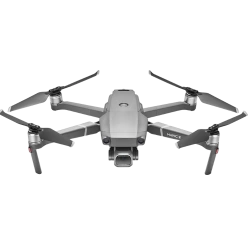
DJI Inspire 2
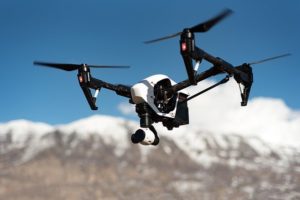 Image by Free-Photos from Pixabay
Image by Free-Photos from PixabayDrone technology is evolving by the minute, and DJI inspire 2 might be the best drone you can get for yourself. With its top-notch design, 5.2K quality raw video capture, and overall impressive performance, it is up there on the list of the superb drones in the market. It is the second generation of the DJI Insprie series.
It is considered a world-class flagship-level drone, it has a magnificent app functionality and also breath-taking optics which is upgradable overtime.
The Inspire 2 takes every good thing from the Inspire 1 and makes it better. The Inspire 2 is, without a doubt, way better than its predecessors. However, the price of getting the drone is a big sticking point; it is quite expensive.
Without going back and forth, let's see why the DJI Inspire 2 is worth the price.
Pros
Superb build quality
Long battery life
2K videos
Interchangeable cameras
Cons
Expensive
It requires a high-performance computer to edit videos
Design
If you're very familiar with the Inspire 1, then DJI inspire 2 won't be a surprise to you, at least in terms of the looks. The quad-prop layout of the Inspire 1 is still retained in the DJI inspire 2, and the arms still have the same sturdy carbon fiber material, giving it impressive strength.
DJI has, however, revised its bodywork, the newer model does away with the white plastic, and a magnesium-aluminum composite takes its place instead. Only four motors power it.
A new introduction to the design is the new forward-facing VFP camera, as well as the obstacle-avoidance system hoisted in a bar in front of the drone. There's also the dual-battery set up for improved stamina.
The DJI inspire 2 also has support for two remotes for the pilot and camera operator alike.
PerformanceA dedicated remote control that is linked to the drone via a sharp pair of antennae is used to control the drone. It has no screen, hence, you connect IOS or Android device to the remote using a wired connection.
You then install the GO 4 app by DJI, once you access the application, you can calibrate the camera and even toggle on and off the beginner mode. The Spotlight Pro helps you in tracking, moving objects, it easily sticks out moving objects, more like glue, something which generally would require a second camera.
The DJI inspires two runs from 0 mph to 50 mph (80kph) in only 5 seconds, and flies at a max speed of 58mph also has a maximum descent speed of 9 m/s.
Despite the additional tech added to the Inspire 2, DJI manages to include a dual-battery set up which increases flying time to around 25 minutes. It is easy to charge the batteries simultaneously with the bundled charger.
Final Verdict
Even though the Inspire 1 was an astounding drone, the DJI Inspire 2, which costs at least $2500 outdoes it in almost every aspect; it has an improved design, a metal bodywork replacing cheap-looking plastic. The twin battery also boosts flight time.
Being able to swap camera lenses makes it quite attractive to video creators and photographers, with all these upgrades and more, the DJI inspire two is definitely worth the money.
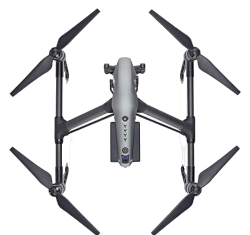
Ways drones are impacting our lives today
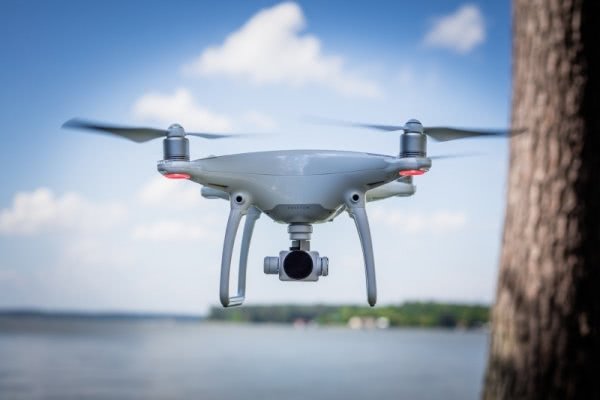
Drones have gone far beyond what most people imagined just a few years ago. In the past, drones were only known with their association with military use and defense. Now, the story has changed, and drones have evolved into better machines and are here to stay.
A countless number of industries are now introducing drone technology to help make certain tasks easier and offer a wider view of things and a safer way to explore places in extreme conditions.
Companies such as Facebook and Amazon are investing in drone technology. Although it hasn’t been approved yet, Amazon plans to use drones for delivery purposes to reduce transportation costs and increase efficiency by avoiding road traffic.
Here are the 6 major ways drones are impacting our lives today
Film industry
Before the advent of (unarmed aerial vehicles) UAVs, the movie industry relied on a helicopter to film certain scenes to get better viewing angles. This method though effective at that time is expensive and requires you to have a pilot with a real helicopter on board. With drones, movie producers have been able to save money on cost and capture more impressive angles on set.
News and journalism
Reporters and news agencies go through a lot to provide us fresh and important news, and this comes with several challenges. One of these challenges is getting footage of crime scenes or other life-endangering happenings. Some of the places they have to get to are just too difficult to reach, and this is where drones come into play.
CNN has utilized this opportunity with its advanced drone program called CNN Air, which has helped them capture footage that is impossible to get by a reporter due to physical barriers.
Space
Sending astronauts to space is not only dangerous but also expensive and quite limiting. There are several planets that man can’t even study personally because of their unfavorable conditions, but drones can.
The Mars 2020 mission will be observed by a robocraft helicopter to see if life ever existed on Mars, NASA made this announcement in May 2018. This puts humans away from any danger out there and helps achieve more effective and detailed research.
Wildlife documentary
There are numerous endangered species across the world today, and most of them are hard to find. Drones have made it possible to track and study animals that live in places that are difficult or dangerous to reach. Rather than placing static cameras in the wild, drone technology allows us to study these creatures from a closer perspective, which gives us a better understanding of life around us.
Sports
The world of sports is filled with fast-paced action and excitement that you don’t want to miss. A straight-line camera can't fully cover all this action. Drones offer closer views and personal perspective, which has changed the way audience experience televised sports.
Extreme outdoor activity
Mountain climbing, hiking, and several other extreme outdoor activities have been made safer by drones. Now, explorers can use drones to map out the area or mountain they want to see or climb to know the difficulties that lie ahead before taking any step. This shows mountain climbers the best routes they can take to reach the top safely instead of endangering themselves. For personal use outdoors the follow me mode enables us to get footage of ourselves like newer before.
UAVs can reach places humans can’t, and drone technology is constantly improving. In the future drones will be able to handle more activities in several industries.
Drones are easy to crush and damage. But if that happens to you, don't worry. You can sell a broken drone to us for cash and buy a replacement.